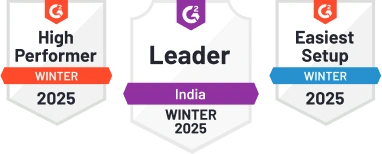Grab a chance to avail 6 Months of Performance Module for FREE
Book a free demo session & learn more about it!
-
Will customized solution for your needs.
-
Empowering users with user-friendly features.
-
Driving success across diverse industries, everywhere.
Grab a chance to avail 6 Months of Performance Module for FREE
Book a free demo session & learn more about it!
Superworks
Modern HR Workplace
Your Partner in the entire Employee Life Cycle
From recruitment to retirement manage every stage of employee lifecycle with ease.



Seamless onboarding & offboarding
Automated compliance & payroll
Track performance & engagement
Painting Contractor KRA/KPI
- Key Responsibility Areas (KRA) & Key Performance Indicators (KPI) for Painting Contractor
- 1. Business Development
- 2. Project Management
- 3. Quality Control
- 4. Customer Relationship Management
- 5. Cost Management
- 6. Employee Development
- 7. Health & Safety Compliance
- 8. Marketing & Branding
- 9. Technology Integration
- 10. Environmental Sustainability
- Real-Time Example of KRA & KPI
- Example: Cost Management
- Key Takeaways
Key Responsibility Areas (KRA) & Key Performance Indicators (KPI) for Painting Contractor
1. Business Development
KRA: Generating new leads and business opportunities to drive growth for the Painting Contractor.
Short Description: Expand client base through proactive strategies.
- Number of new leads acquired monthly
- Conversion rate of leads into clients
- Total value of new contracts secured
- Growth percentage in revenue from new clients
2. Project Management
KRA: Ensuring efficient planning, execution, and completion of painting projects within set timelines and budget.
Short Description: Manage projects effectively for client satisfaction.
- Percentage of projects completed on time
- Percentage of projects within budget
- Customer satisfaction rating on completed projects
- Average project profitability margin
3. Quality Control
KRA: Maintaining high-quality standards in painting services to meet customer expectations and industry regulations.
Short Description: Ensure top-notch painting craftsmanship.
- Number of reported defects or rework requests
- Customer feedback ratings on quality of work
- Compliance with industry quality standards
- Employee training hours on quality improvement
4. Customer Relationship Management
KRA: Building and nurturing strong relationships with clients to foster loyalty and repeat business.
Short Description: Enhance customer satisfaction and retention.
- Net Promoter Score (NPS) from clients
- Percentage of repeat business from existing clients
- Response time to customer queries or issues
- Number of positive client testimonials or reviews
5. Cost Management
KRA: Monitoring and optimizing costs associated with painting projects to maximize profitability.
Short Description: Control expenses without compromising quality.
- Percentage variance of actual costs from estimated costs
- Cost savings initiatives implemented
- Profit margin per project
- Overall cost efficiency ratio
6. Employee Development
KRA: Investing in the growth and skills development of painting contractor staff.
Short Description: Enhance team capabilities and morale.
- Employee training hours per quarter
- Employee satisfaction survey results
- Percentage of staff with updated certifications
- Retention rate of skilled employees
7. Health & Safety Compliance
KRA: Ensuring adherence to health and safety regulations to protect employees and clients.
Short Description: Maintain a safe work environment.
- Number of safety incidents or accidents
- Completion rate of safety training for employees
- Compliance with OSHA standards
- Audit results on safety practices
8. Marketing & Branding
KRA: Promoting the painting contractor’s services effectively to increase brand visibility and attract new clients.
Short Description: Enhance brand reputation and market presence.
- Number of leads generated from marketing campaigns
- Social media engagement metrics (likes, shares, comments)
- Brand awareness survey results
- Conversion rate from marketing channels
9. Technology Integration
KRA: Incorporating technology solutions to streamline operations and enhance service delivery.
Short Description: Embrace digital tools for operational efficiency.
- Percentage of processes automated
- Employee adoption rate of new technologies
- Reduction in project turnaround time due to technology
- Customer feedback on tech-enabled services
10. Environmental Sustainability
KRA: Implementing eco-friendly practices and materials to reduce the environmental impact of painting projects.
Short Description: Foster sustainability in painting operations.
- Percentage of projects using sustainable materials
- Reduction in carbon footprint per project
- Certifications or awards for environmental initiatives
- Customer perception of the company’s environmental efforts
Real-Time Example of KRA & KPI
Example: Cost Management
KRA: Monitoring and optimizing costs associated with painting projects to maximize profitability.
- KPI 1: Percentage variance of actual costs from estimated costs
- KPI 2: Cost savings initiatives implemented
- KPI 3: Profit margin per project
- KPI 4: Overall cost efficiency ratio
Efficient cost management led to a 10% increase in overall project profitability and improved financial stability for the Painting Contractor.
Key Takeaways
- KRA defines what needs to be done, whereas KPI measures how well it is done.
- KPIs should always be SMART (Specific, Measurable, Achievable, Relevant, Time-bound).
- Regular tracking and adjustments ensure success in Painting Contractor.




